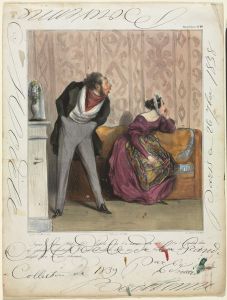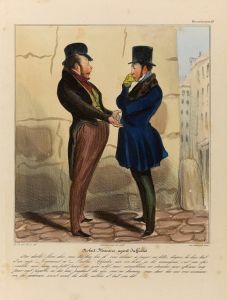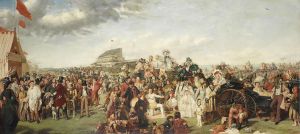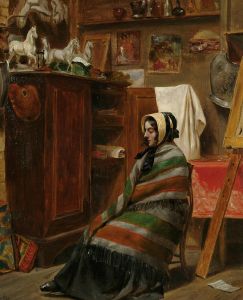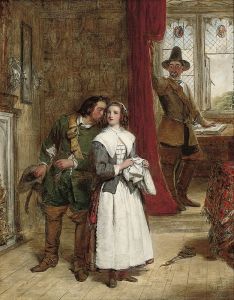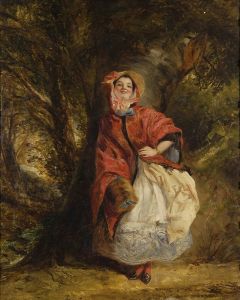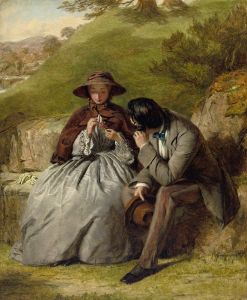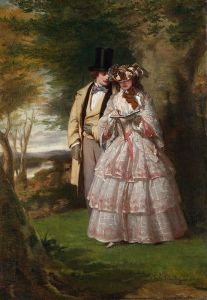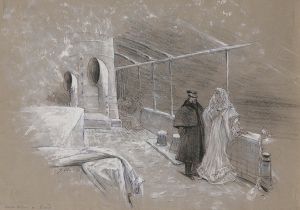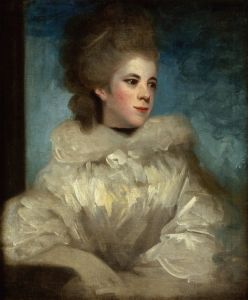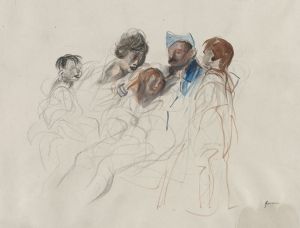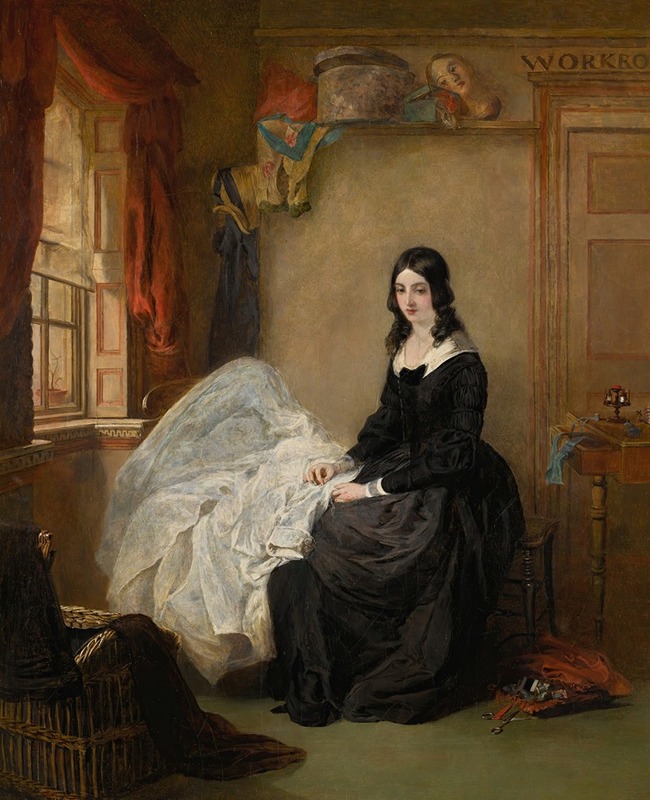
Kate Nickleby at Madame Mantalini’s
A hand-painted replica of William Powell Frith’s masterpiece Kate Nickleby at Madame Mantalini’s, meticulously crafted by professional artists to capture the true essence of the original. Each piece is created with museum-quality canvas and rare mineral pigments, carefully painted by experienced artists with delicate brushstrokes and rich, layered colors to perfectly recreate the texture of the original artwork. Unlike machine-printed reproductions, this hand-painted version brings the painting to life, infused with the artist’s emotions and skill in every stroke. Whether for personal collection or home decoration, it instantly elevates the artistic atmosphere of any space.
William Powell Frith's painting "Kate Nickleby at Madame Mantalini’s" is an evocative work that captures a scene from Charles Dickens' novel "Nicholas Nickleby," published in 1839. Frith, a prominent British painter of the Victorian era, was known for his detailed and narrative-rich paintings, often drawing inspiration from literature and contemporary life. This particular painting is a testament to his ability to translate literary scenes into visual art.
The painting depicts a moment from Dickens' novel where the character Kate Nickleby finds herself working at Madame Mantalini's dressmaking establishment. In the story, Kate, the sister of the protagonist Nicholas Nickleby, is forced to seek employment due to her family's financial difficulties. Madame Mantalini's is portrayed as a fashionable but somewhat oppressive environment, reflecting the challenges faced by women in the workforce during the 19th century.
Frith's work is characterized by its attention to detail and the ability to convey the social dynamics of the time. In "Kate Nickleby at Madame Mantalini’s," he captures the bustling atmosphere of the dress shop, with its array of fabrics, dresses, and the interactions between the characters. The painting not only illustrates a scene from the novel but also provides insight into the fashion and social customs of the Victorian era.
The composition of the painting is carefully arranged to draw the viewer's attention to Kate, who is depicted with a sense of grace and dignity amidst the chaos of the shop. Frith's use of color and light highlights her figure, emphasizing her role as the central character in the scene. The other figures in the painting, including Madame Mantalini and the shop's clientele, are rendered with equal care, each contributing to the narrative and atmosphere of the piece.
Frith's ability to capture the essence of Dickens' characters and settings is a testament to his skill as a narrative painter. His works often reflect the social issues of his time, and "Kate Nickleby at Madame Mantalini’s" is no exception. Through this painting, Frith not only illustrates a moment from a beloved novel but also comments on the societal expectations and limitations placed on women during the Victorian period.
The painting is part of a larger body of work by Frith that explores themes from Dickens' novels, showcasing his admiration for the author's storytelling and his own ability to bring those stories to life through art. Frith's paintings, including this one, are celebrated for their narrative depth and historical accuracy, making them valuable resources for understanding both the literature and the social history of the 19th century.
"Kate Nickleby at Madame Mantalini’s" remains an important work in Frith's oeuvre, exemplifying his talent for combining literary inspiration with artistic expression. It continues to be appreciated for its detailed portrayal of a Dickensian world and its commentary on the social issues of the time.





